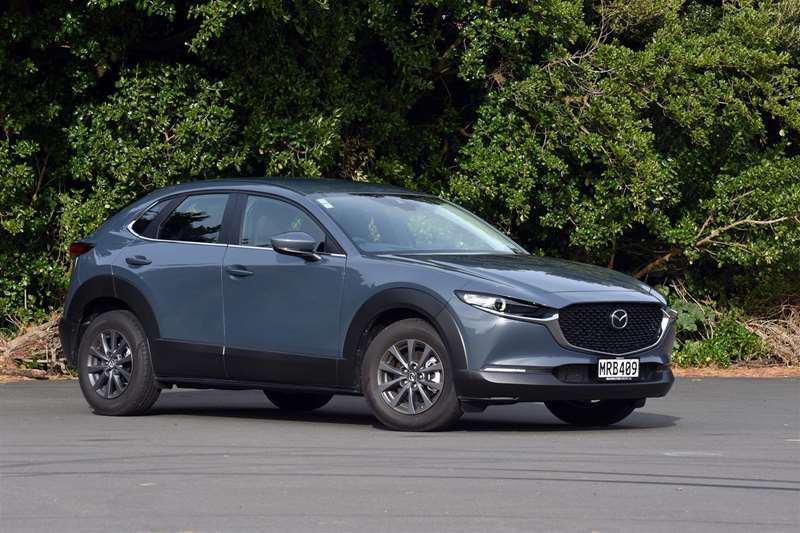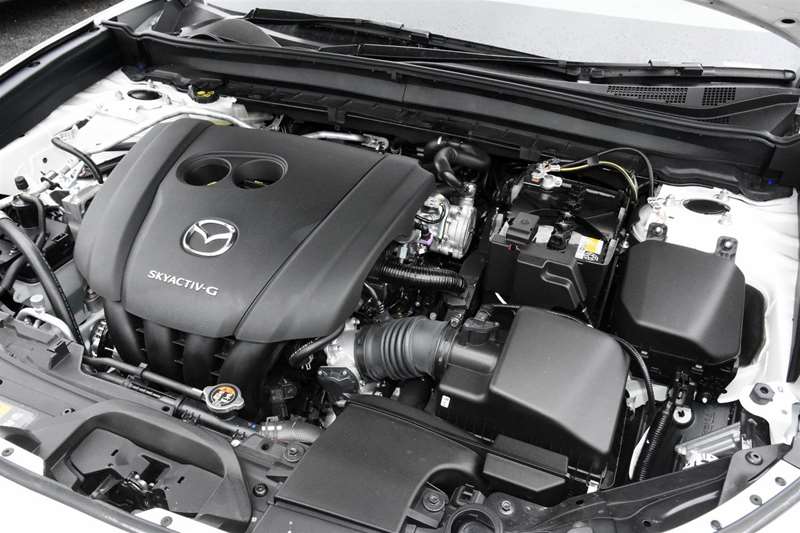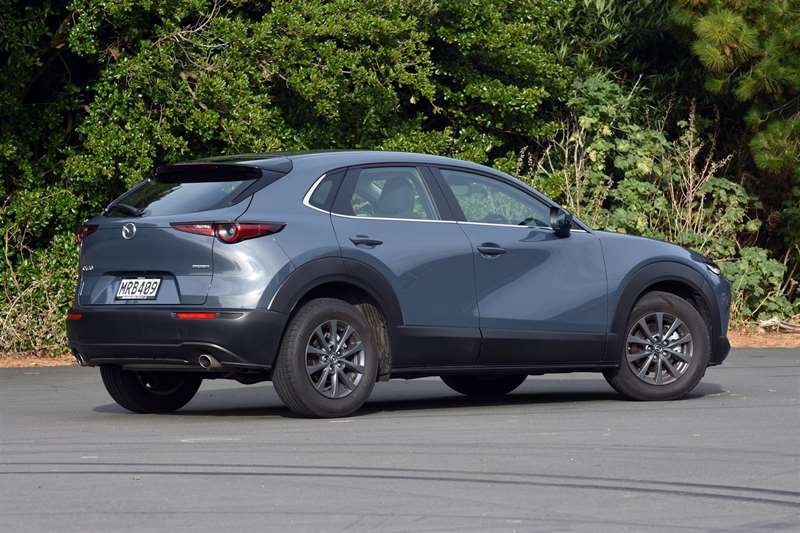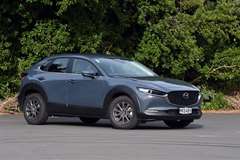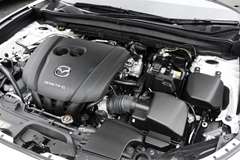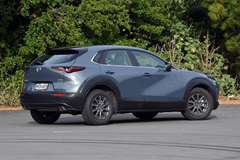The CX-30 is an all-new addition to Mazda’s SUV range. David Thomson tries two models to see what’s on offer.
What’s new?
When Mazda announced last year that a new SUV model was on the way to slot in between the CX-3 and CX-5, both its place in the range and name
— the CX-30 — prompted considerable discussion.
Surely, some opined, the CX-3 and CX-5 were close enough in size to leave no room for an in-betweener. And if there were to be such a machine, why not call it the CX-4?
The answer to the latter question is simple; the CX-4 nameplate is already used for a China-only Mazda produced in a joint venture with the Chinese state-owned manufacturer FAW (First Automobile Works). Whether there’s room enough between the CX-3 and the CX-5 is something the market will deliver the ultimate verdict on, but Mazda is following rather than setting a trend in filling small gaps in its SUV lineup with intermediate models.
So the CX-30 is here, positioned between the CX-3 and CX-5 just as the Mazda3 sits between the Mazda2 and Mazda6 in the Hiroshima company’s conventional car range.
That said, don’t be tempted to think of the CX-30 simply as a high-riding version of the Mazda3. Yes, the CX-30 shares elements with its similar-sized sibling including engines, transmissions, interior architecture, key styling cues and much of its underlying modular platform, but it is shorter in the wheelbase by 70mm, the rear ofthe platform is different, and so, too, the bodywork.
Size-wise it’s 4395mm long, 100mm longer than a CX-3, but 155mm shorter than the CX-5. It also splits its siblings for ground clearance (175mm), but is shorter than both, standing 1540mm tall.
New Zealand has three models for now, opening with the $41,490 front-wheel drive GSX, powered by the 114kW/200Nm 2.0 litre Skyactiv-G engine. The other two models, GTX and Limited, and are both all-wheel drive, and powered by the 139kW/ 252Nm 2.5 litre Skyactiv-G motor. Both engine choices come with six-speed automatic transmissions.
Pricing — $41,490 for the GSX, $44,990 for the GTX and $50,990 for Limited —positions the CX-30 clear of the CX-3, but overlaps the CX-5.
This appraisal covers the GSX and Limited models.
What comes as standard?
Mazda’s i-Active sense safety package is standard, providing even the GSX with active radar cruise control with stop-go functionality, lane keeping assistance, blind-spot monitoring, rear cross-traffic alert and active emergency braking with cyclist and night-time pedestrian detection, auto-dipping headlights, and traffic sign recognition. The GTX safety specification adds autonomous rear braking and ‘‘Intelligent Speed Assistance’’, while the Limited also has front cross-traffic alert.
Comfort and convenience features on the GSX include keyless entry, push-button start, heated exterior mirrors, LED headlights, a head up display and auto wipers. There’s an eight-speaker audio system and 8.8-inch centre display, with Apple Car Play and Android Auto connectivity and satellite navigation.
The GTX and Limited add an off-road traction assist feature to support their all-wheel drive capability. The GTX also takes dualzone climate control and heated seats. The Limited adds leather trim, heated front seats (the drivers’ power adjusting), privacy glass, a sunroof and 13-speaker Bose audio system.
What’s it like to look at?
There are clear echoes of the latest Mazda3 in the application of concave styling panels along the flanks of the CX-30 to create a shimmering look to the vehicle’s sides. This feature combines with slender headlights, a rising bonnet line and a cleverly angled rear pillar to give the CX-30 the sleekest look in Mazda’s SUV line.
The absence of fitted roof rails sets the CX-30 apart from many rivals, and while this helps give a relatively low-slung look, it comes at the cost of a genuinely practical feature. On the other hand, the CX-30 follows a common crossover route in deploying black plastic wheel arch frames to give a more rugged look. To my mind, this is the least successful aspect of an otherwise very attractive design.
As an aside, the car photographed for this test is actually the entry-level GSX; its 16-inch alloys don’t do quite the same job of filling the CX-30’s wheel arches as the 18-inch wheels fitted to allwheel drive models.
What’s it like inside?
Key elements of the CX-30’s cabin, especially up front, are lifted directly from the Mazda3, albeit with a higher seat and driving position. Soft touch surfaces are plentiful, the key switchgear has a quality feel, and the standard of fit-and-finish is outstanding throughout. In these respects, the CX-30 certainly feels more like the CX-5 than the CX-3.
The CX-30 bests its siblings in its large, clear centre screen and associated operating system. Fans of touchscreens be warned though, functions on this screen are not controlled by touch, but by a rotary dial flanked by buttons positioned just behind the gear shift.
Storage options up front are plentiful, and include a sizeable lidded centre console bin, a cubby and twin cupholders at the base of the fascia, a reasonable glovebox, and generous door bins.
Appreciably roomier and with better visibility than the CX-3, the CX-30’s back seats provide fair accommodation for two adults, or a trio of children. Boot space, inclusive of a reasonable cavity under the floor, is 430 litres, and 317 litres above the floor. While superior to the CX-3, that’s not especially generous by class standards. Folding the 60:40 split rears seats down takes the CX-30 to a much more competitive 1406 litres.
Towing capacity, at 600kg unbraked or 1200kg braked, is very similar to the CX-3, but well shy of the CX-5’s 750kg/ 2000kg capability.
What’s it like to drive?
Many customers are drawn to SUVs over a conventional car for ease of access, enhanced visibility and the sense of security provided by the higher seating position.
If those, rather than any back-block or winter weather capability are primary considerations, then the frontwheel drive 2.0-litre GSX delivers on all counts.
Along with a high-quality finish, excellent refinement is a hallmark of the CX-30, even at entry-level. Mechanical chatter is especially well contained on the GSX around town. Wind roar is minimal at highway speeds, too, but the biggest refinement gain comes in an area that has previously been a weak point for smaller Mazdas: coarse-chip road noise. By all accounts, addressing the road noise issue has required not only extra attention in sound proofing and suspension isolation, but careful tyre choices, too.
Ride quality is generally very good, helped by the generous sidewalls of the GSX’s 215/65 tyres as well as its suspension tune.
While muted in everyday operation, the 2.0 litre engine delivers a sporty snarl and a respectable turn of speed when required (Mazda quotes a 0-100kmh time of 10.2 seconds). The choice of a conventional six-speed automatic over the CVT transmission favoured by many of its rivals helps refinement as well as performance.
The steering is accurate if a trifle light. The GSX corners with agility, its G-Vectoring software subtly adjusting torque delivery and applying individual wheel braking to minimise understeer.
The Limited’s cabin is considerably more sumptuous. That said, thanks mainly to its 55-profile tyres and slightly more vocal engine, the Limited is shaded by the GSX for refinement during everyday urban motoring.
On the other hand, paddle shift controls in the Limited add to the driver appeal, along with a 2.5 litre engine that deals out roughly 20% more power and 25% more torque than the 2.0 litre, and which propels the vehicle from 0-100kmh in 9.1 seconds.
All-wheel drive is the other obvious point off difference and, while it is certainly not cut out for heavy-duty off road work, the Limited managed to traverse a couple of slushy back roads on test in a sure-footed manner.
Like the front-wheel drive GSX, the Limited is enjoyable and well-mannered when hustled down tarmac backroads, proving mechanically strong when worked, and taking corners with far less body roll and greater composure than many vehicles of its type.
As with the GSX, the provision of a head up display and active radar cruise make extended highway work particularly easy, and the Limited combines a comfortable, long-legged cruising ability with the 2.5 litre motor’s extra pep for overtaking.
Idle-stop and selective cylinder deactivation help the economy of both engines, but Mazda’s decision to stick with larger capacity normally aspirated engines rather than the smaller turbo units favoured by some (especially European) rivals does carry a fuel efficiency cost. On the other hand, staying this course enables the CX-30 to indulge a diet of 91 octane fuel rather than the pricier 95 octane small turbos typically require.
A standard cycle consumption figure of 6.8l/100km is given for the 2.5 litre models, while the 2.0 litre returns 6.5l/100km. A decisive move towards 20%-30% greater efficiency is pending, with the Mazda’s innovative new SkyActiv-X engine likely to appear under the bonnet of a further CX-30 model later in the year.
Verdict
Time behind the wheel quickly settles any doubt as to there being room for the new CX-30 in Mazda’s SUV/ crossover line up. Although sized between the CX-3 and CX-5, it has its own distinctive feel, and is in many respects superior to both.
Photos: David Thomson
